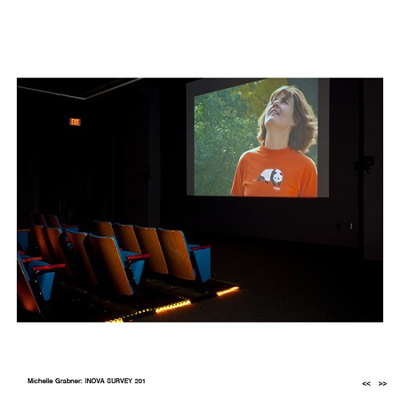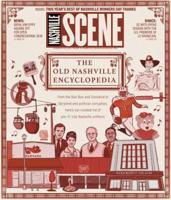
In the middle of the day on Dec. 17, the Nashville Public Library auditorium filled for the latest installment of the "Insight? Outta Sight!" lecture series hosted by Adrienne Outlaw's nonprofit arts organization Seed Space: a discussion with one of the 2014 Whitney Biennial curators, Michelle Grabner. For Nashville-based artists and art people, who wait with anticipation for this city to grow into the boots it claims to wear, the down-to-earth, unpretentious curator offered some hope.
No, it was not hope that she would include some of them in the Whitney Biennial. (She has already selected all of her artists, none of whom are from Nashville.) The hope had something to do with a needed deflating of the art-world ego she represents. In response to the growing criticism that the WB merely panders to Chelsea galleries and the deep pockets of New York City, the 2014 Biennial was intentionally placed in the hands of non-New Yorkers.
Grabner originated as a painter inspired by the backdrops of her middle-class upbringing in the Midwest. When she and her husband moved to Milwaukee in the 1990s to raise their family, she started writing art criticism because it was the only way she could engage in a greater discourse. Upon returning to Chicago to teach, she and her husband started the backyard exhibition space The Suburban and, a decade later, the Wisconsin-based The Poor Farm. Both spaces exist in their home environments; the latter is a nonprofit, while the former is financially backed directly out of their pockets.
Sitting on the stage in her navy hoodie and jeans, Grabner openly admitted that she didn’t envy young artists today. Coming from an Art Institute of Chicago professor — well, that doesn’t offer much hope. But she qualified that by saying “young people” know they are entering into an art world that is more aggressive, unrewarding and trifling than ever before. She went on to say that this is the time for middle-aged artists — “people like me.” Most of the artists she chose for the WB fit into that description, she said. With the fetishization of boredom (best represented by David Foster Wallace in her curatorial selection) as one thematic thread, she approached the challenge of curating this Biennial by doing what made sense to her.
As a curator, Grabner treats the artists she works with as family. She made her selections for the WB based on getting to know people — studying how they design their work spaces and listening to them discuss their work. “The experience of being inside an artist studio doesn’t transfer into the exhibition space,” she explained, “but that is where I go to understand what they are doing.”
In the midst of all the uninspiring banter regarding the “art world as an agent of globalization” (see Pamela Lee's Forgetting the Art World) or the hyper-professionalization of the art world — or just the term “art world” — Grabner offers some sort of respite. True, the Nashville art scene has never been on the Whitney Biennial track; as Grabner advised, “If you want to be in the Whitney Biennial, move to New York.”
But I don’t think Nashville artists are all that concerned with being in the Whitney Biennial. I think they are more interested in turning backyards into places that nurture discourse.





